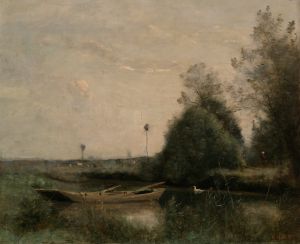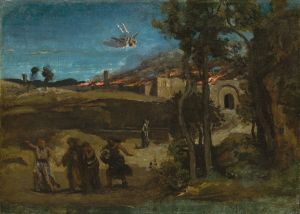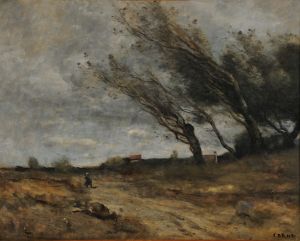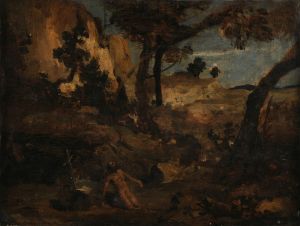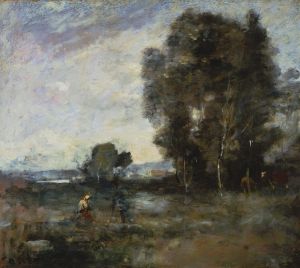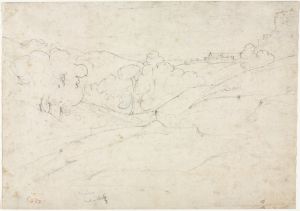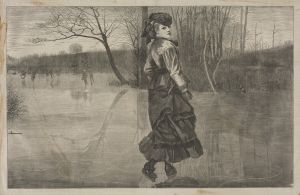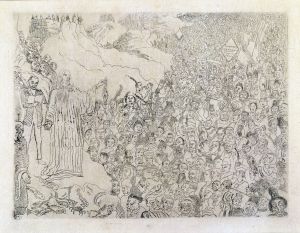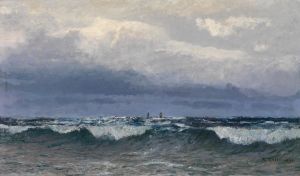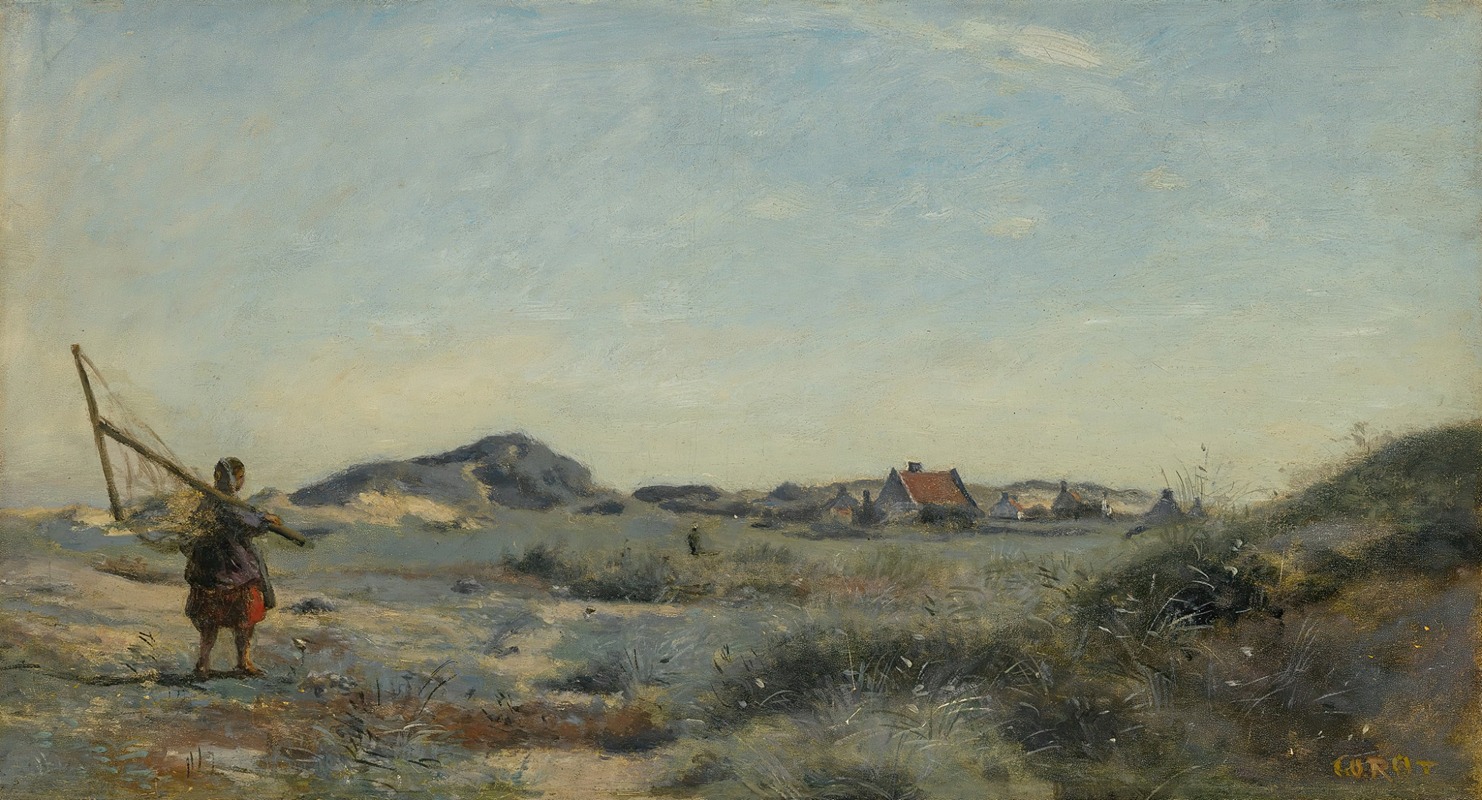
Dunkerque. Une pêcheuse de crevettes
A hand-painted replica of Jean-Baptiste-Camille Corot’s masterpiece Dunkerque. Une pêcheuse de crevettes, meticulously crafted by professional artists to capture the true essence of the original. Each piece is created with museum-quality canvas and rare mineral pigments, carefully painted by experienced artists with delicate brushstrokes and rich, layered colors to perfectly recreate the texture of the original artwork. Unlike machine-printed reproductions, this hand-painted version brings the painting to life, infused with the artist’s emotions and skill in every stroke. Whether for personal collection or home decoration, it instantly elevates the artistic atmosphere of any space.
Jean-Baptiste-Camille Corot was a prominent French landscape and portrait painter, associated with the Barbizon School, which was part of the broader Realism movement in 19th-century art. Corot is renowned for his ability to capture the subtle nuances of light and atmosphere in his works, often depicting serene landscapes and figures in natural settings. One of his lesser-known works is "Dunkerque. Une pêcheuse de crevettes" (Dunkirk. A Shrimp Fisherwoman).
"Dunkerque. Une pêcheuse de crevettes" is a painting that exemplifies Corot's interest in capturing everyday life and the natural environment. The painting depicts a scene in Dunkirk, a coastal city in northern France, known for its fishing industry. The focal point of the painting is a shrimp fisherwoman, a subject that reflects Corot's interest in portraying rural and working-class individuals, a common theme in his oeuvre.
Corot's technique in this painting, as in many of his works, is characterized by a soft, almost ethereal quality. He often employed a muted color palette, which can be seen in the gentle tones used to depict the sky, sea, and the fisherwoman's attire. The brushwork is delicate and fluid, contributing to the overall sense of tranquility and harmony in the composition. This approach allows the viewer to focus on the mood and atmosphere of the scene rather than on intricate details.
The setting of Dunkirk provides a backdrop that is both specific and universal. While the painting captures a particular moment in a specific location, the themes of labor, nature, and the human connection to the sea are timeless and resonate with broader human experiences. The fisherwoman, engaged in her daily task, embodies the resilience and simplicity of life by the sea.
Corot's work, including "Dunkerque. Une pêcheuse de crevettes," played a significant role in the transition from the Neoclassical tradition to the more modern approaches of Impressionism. His emphasis on capturing light and atmosphere influenced many later artists, including the Impressionists, who admired his ability to convey the fleeting effects of light and the essence of a scene.
While "Dunkerque. Une pêcheuse de crevettes" may not be as widely recognized as some of Corot's other works, it remains an important piece within his body of work. It reflects his commitment to depicting the natural world and the people within it with sensitivity and respect. The painting is a testament to Corot's skill in blending realism with a poetic sensibility, creating works that continue to be appreciated for their beauty and emotional depth.
In summary, "Dunkerque. Une pêcheuse de crevettes" by Jean-Baptiste-Camille Corot is a fine example of the artist's ability to capture the quiet dignity of everyday life through his masterful use of light and composition. The painting not only highlights Corot's technical prowess but also his deep empathy for his subjects, making it a valuable piece in the study of 19th-century French art.





